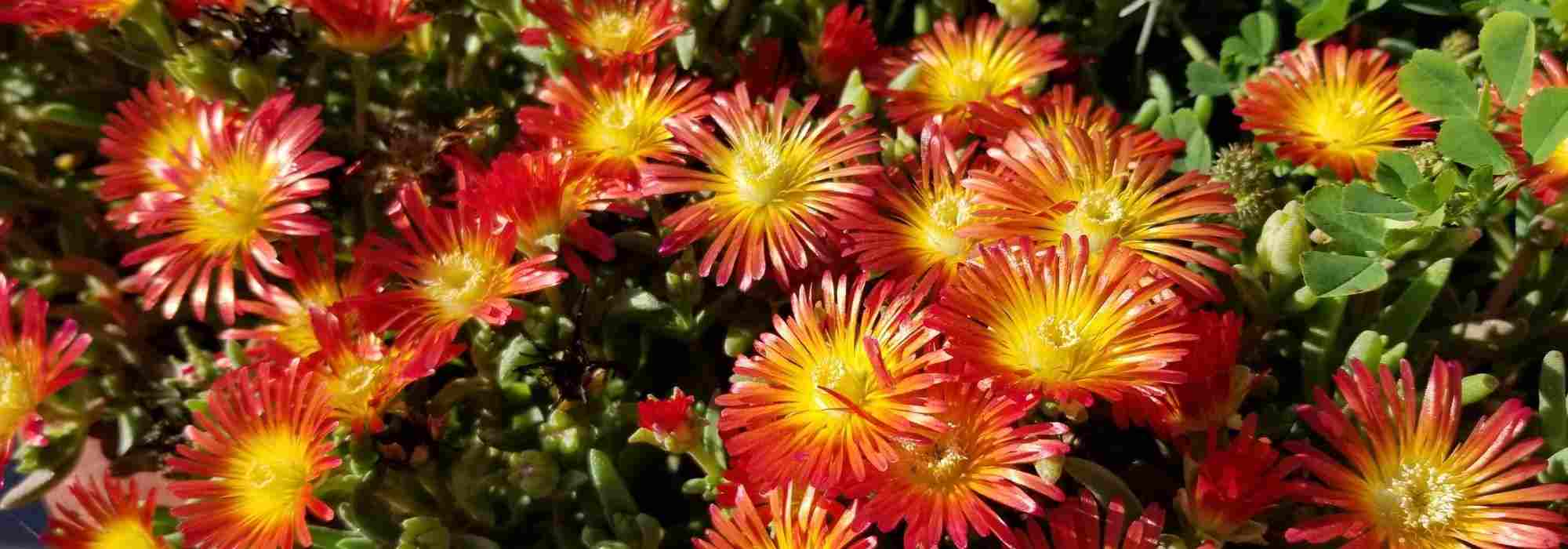
Growing a Delosperma in a pot
To brighten up your balcony or terrace with vibrant colours
Contents
The Delosperma, also known as hardy ice plant, is a succulent plant that can be easily grown in pots. It blooms from May until the first frosts, producing flowers shaped like small daisies with fine ligulate petals. They display a whole range of colours: pink, mauve, orange, yellow, or white. This plant is moderately hardy, as it can withstand frost down to -8° to -10° C. Pot cultivation allows you to grow Delosperma even in regions with harsh winters, as it can be brought indoors during winter to protect it from frost. Additionally, with its lovely brightly coloured flowers that cascade over the edges, you can create beautiful floral displays or hanging arrangements. Discover our tips for growing Delosperma in pots.
Which Delosperma to grow in a pot?
Delosperma are groundcovers with a height ranging from 8 to 15 cm. These are low-maintenance plants that require little soil and can tolerate drought and heat. All Delosperma can be grown in pots. You can even play with the wide range of colours of Delosperma and combine them. Their foliage can be semi-evergreen or even evergreen depending on the species.
For example, you can plant:
- the Delosperma cooperi which is the most commonly used species. It measures 10 cm in height and its small fleshy green leaves are covered with fuchsia pink flowers from June to September.
- the Delosperma floribundum or Cooper’s ice plant ‘Stardust’. At a height of 15 cm, it produces star-shaped purple flowers with a white centre from May to October.
- the delosperma ‘Wheels of Wonder’ which measures 15 cm and blooms between June and September. It comes in various colours: the Delosperma ‘Wheels of Wonder’ orange or Fire’, yellow, white, violet with a yellow centre or pink with a yellow centre
- the Delosperma sutherlandii of 10 cm that boasts bright pink flowers from June to September.
- the Delosperma ‘Table Mountain’ of 8 cm that also blooms in bright pink from June to September and has evergreen foliage.
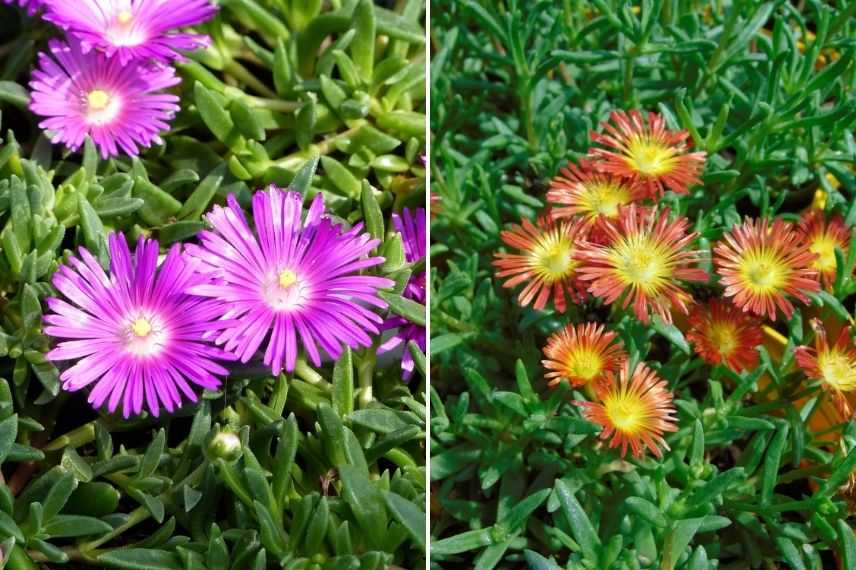
Delosperma cooperi and Delosperma ‘Wheels of Wonder Fire’
How to grow a Delosperma in a pot?
What type of pot?
Clay or stone pots are preferable, as they allow for better aeration inside, with Delosperma requiring a very well-drained substrate.
Delosperma needs little soil to grow. You can plant it in a pot 30 cm in diameter and shallow.
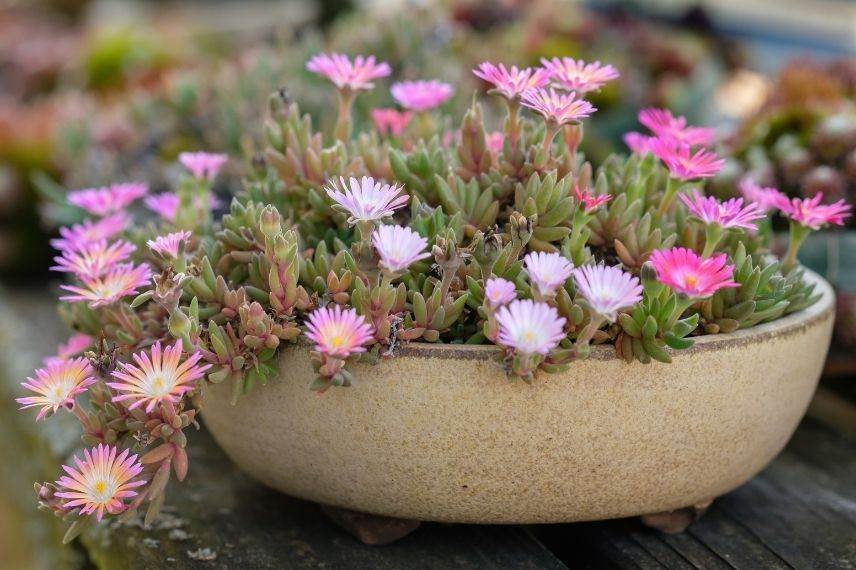
Perennial purslane in a shallow pot.
What substrate?
Delosperma requires a very well-drained substrate. You can use soil or potting mix mixed with sand or gravel.
Planting
- Take a pot 30 cm in diameter with a drainage hole
- Place a drainage layer of clay balls or gravel at the bottom
- Cover with the soil and sand or gravel mixture
- Place the plant and cover with the remaining substrate
- Firm the soil around the base
- Water without excess
Discover other Delosperma
View all →Available in 0 sizes
Available in 2 sizes
Available in 2 sizes
Available in 2 sizes
Available in 2 sizes
Available in 1 sizes
Available in 2 sizes
Available in 1 sizes
Available in 2 sizes
Available in 1 sizes
Where and when to plant a Delosperma in a pot?
- Perennial purslane thrives in very sunny conditions. On your balcony or terrace, place it in full sun.
- Plant Delosperma preferably in spring, between February and April and outside of frost periods. You can also plant it between August and October, avoiding frost or heatwave episodes.

A plant for warm and dry climates, purslane requires full sun to flower.
How to care for a Delosperma in a pot?
Watering
Delosperma prefers dry substrates. Water only during the first year, at a rate of once a week and in moderation. Ensure that the substrate is completely dry before watering. Water should not stagnate at the base of the Delosperma as this can cause it to decline.
Fertiliser
Delosperma thrives in poor soils. Therefore, adding fertiliser is not necessary, but you can give it a little liquid fertiliser in spring to further encourage flowering.
Pruning
- If it is happy, Delosperma can become invasive. In this case, you can prune it in spring with clean, sharp pruning shears to maintain a size that suits you.
- Remove faded flowers during the flowering period to encourage a renewal of blooms.
- In autumn, remove dead leaves or flowers that may accumulate on the foliage and cause rot.
- Do not hesitate to remove any dry or water-damaged parts as well.
Repotting
Every 2 to 3 years, divide the stumps and repot into new pots. You can carry out this operation by digging up the plant to be rejuvenated and cutting parts of the roots with disinfected pruning shears. Dividing the stumps is done in spring or autumn, always outside of frost and heatwave periods.
Diseases and Pests
Delosperma is very resilient and insensitive to diseases and pests. What it fears most is excess moisture.
Wintering
Delosperma is sensitive to frost from -8° to -10° C depending on the species. Below these temperatures, bring it indoors to a greenhouse or conservatory. During wintering, do not water the Delosperma, as the plant should be kept dry.
For further reading
To learn all about Delosperma, check out our comprehensive guide dedicated to this lovely plant, as well as our complete collection of Delospermas.
To avoid any failures, we recommend planting appropriately; don’t hesitate to adopt our Plantfit web application!
- Subscribe!
- Contents
































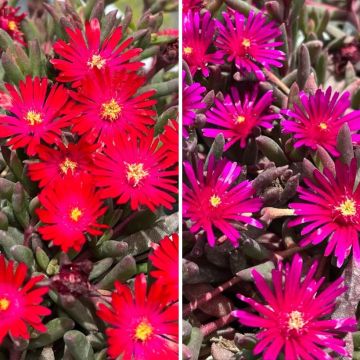
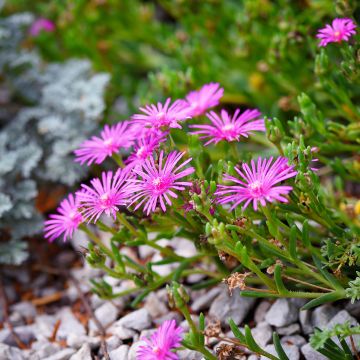

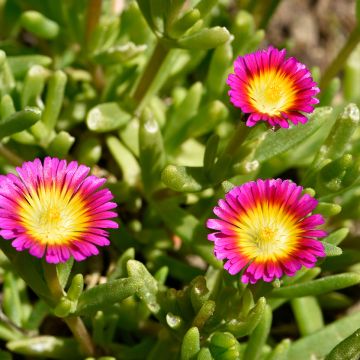

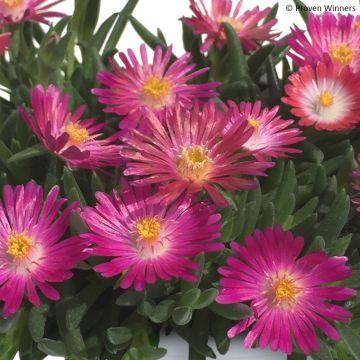

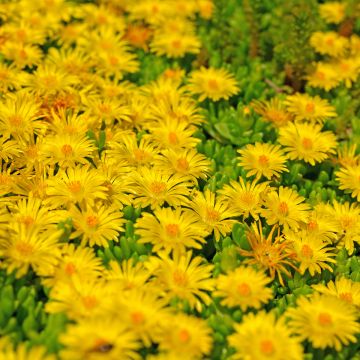

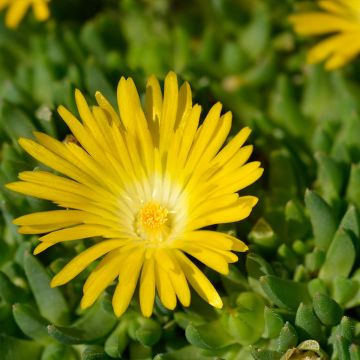
Comments